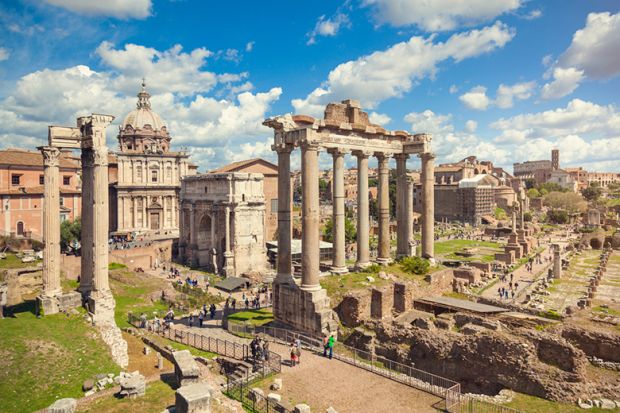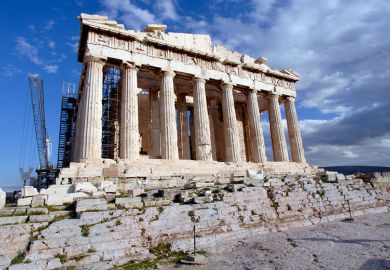If you, dear cultured reader, did not dream of crowning your youthful education with a voyage to Rome, you’re in the wrong. But take heart: it’s only because you are the victim of the modern age. Over the past 200 years, a cumulative sequence of artistic, archaeological, literary, political, municipal, military and academic tendencies have conspired to displace the Eternal City from its rightful position as the aesthetic soul of Europe, pulling the rug out from under Rome’s august feet.
This is John Pemble’s view in his elegy for The Rome We Have Lost. He means Old Rome, the city as it was during the 300 years loosely bracketed by the Avignon papacy and Napoleon. This is the Rome of grand popes and Grand Tourists, connoting for the entire Western world both eternity and ruin, both civilisation and wilderness. Having lost that Rome, Europe has lost its moorings.
Pemble’s book aims, first, to recapture how Old Rome looked and the emotions it provoked, and then to chart the forces of its gradual evaporation. It is a fascinating story. Old Rome’s visitors thrilled to the dazzling, foreign Catholic spectacle but, more importantly, flew into ecstatic rhapsodies at the sight of ancient sculptures and evocatively moss-coated ruins. Rome was their lone, invaluable portal to ancient classical glory.
Then came the Enlightenment and the birth of the “modern mind” – a too-blunt handle that Pemble apologises for using. Enlightenment thinkers, driven by a need to impose coherence, found Rome a useful constant, even as they restored its antiquities and shoehorned its history into new categories that they had invented. But things went downhill from there. “Modernity” demanded constant change; Rome came to seem a relic, a grave only. New access to Greek antiquities displaced its classical primacy. Ultimately, Italian nationalisation neutered papal pageantry, turned grassy antiquities into denuded monuments surrounded by motorways and eventually refashioned Rome – New Rome – as just another nearly indistinguishable stop on the Eurotrash circuit.
Any serious consideration of what Rome means must combine vastly different disciplines. Pemble is poetic, skilled and erudite in juggling them. He’s at his best in showing how our own supposedly individual tastes are shaped by shifting national priorities, which in turn influence both art criticism and the fate of artworks. Take the Apollo Belvedere, a Greek statue venerated by Renaissance artists and by tourists. Its very peerlessness led dictators from Napoleon to Hitler to claim it and their opponents, in turn, to reject it. So, too, did the new aesthetic taste for earlier Greek periods, enabled by the growth of archaeology. Now the bust is almost unknown as a Roman attraction.
Pemble’s case for Old Rome can be overwrought. Did Flanders really replace Rome as Europe’s poetic graveyard? Must Nathaniel Hawthorne and Émile Zola be read his way? Also, while I never dismiss the importance of older scholarship, he should have included some works on Rome or Italy written in the past 30 years. Yet his book raises vital questions and I wish that he had addressed them. Does he think that Old Rome was all rosy? Which parts of it should we have kept? And now that we know the depth of the Rome-shaped hole in the modern world, how might we fill it?
Emily Michelson is senior lecturer in history at the University of St Andrews, specialising in Italy and Rome.
The Rome We Have Lost
By John Pemble
Oxford University Press, 192pp, £18.99
ISBN 9780198803966
Published 23 November 2017
POSTSCRIPT:
Print headline: Portal to ancient classical glory
Register to continue
Why register?
- Registration is free and only takes a moment
- Once registered, you can read 3 articles a month
- Sign up for our newsletter
Subscribe
Or subscribe for unlimited access to:
- Unlimited access to news, views, insights & reviews
- Digital editions
- Digital access to THE’s university and college rankings analysis
Already registered or a current subscriber?








